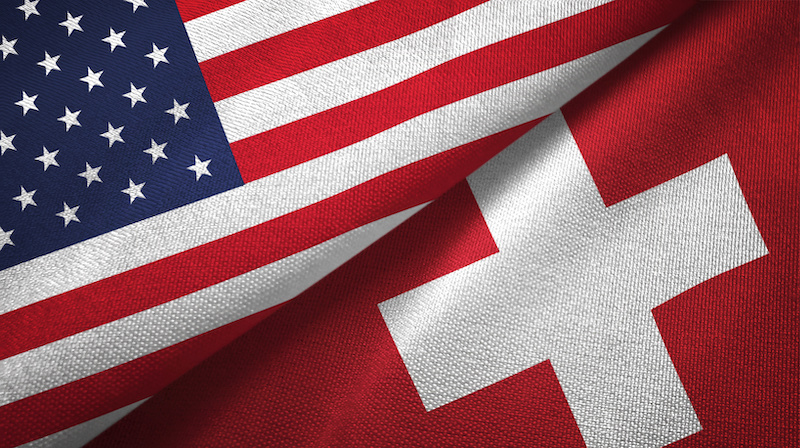Stephen Miran’s (the new chairman of the Council of Economic Advisers, The White House) proposal to weaken the US dollar as a means to boost American manufacturing and correct trade imbalances has sparked discussions about its broader implications. As an economic strategy involving tariffs and potential currency interventions—reminiscent of the 1985 Plaza Accord—this policy would lower the dollar’s value against currencies like the Swiss franc. Below, we explore how this could affect US citizens traveling to Switzerland and Switzerland’s overall tourism performance, weighing both the positive and negative impacts, supported by economic data and historical examples, and concluding with an optimistic outlook.
The Downside: Higher Costs for US Travelers
A weaker US dollar directly reduces the purchasing power of American tourists in Switzerland. With fewer Swiss francs per dollar, the cost of accommodations, dining, transportation, and activities rises. To illustrate:
- Exchange Rate Effect: If the dollar depreciates by 15% against the Swiss franc, a hotel room priced at CHF 200 would increase from $200 (at parity) to approximately $235 for an American traveler, assuming no other changes.
Historical evidence highlights this challenge. During the 2008 financial crisis, the US dollar lost about 30% of its value against the Swiss franc between 2007 and 2011. Data from Switzerland Tourism shows that US overnight stays in Switzerland dropped by roughly 10% from 2007 to 2009, from approximately 1.5 million to 1.35 million. This decline reflects how a stronger franc can deter American visitors by making Switzerland a pricier destination (although the financial crisis also impacted demand for international tourism), potentially reducing US travel demand in the short term under Miran’s strategy.
The Upside: Economic Growth and Travel Resilience
However, the negative effects may be tempered by the broader goals of Miran’s policy. By weakening the dollar to enhance US manufacturing, the strategy aims to spur economic growth, increasing jobs and disposable incomes. This could sustain or even boost US outbound travel, including to Switzerland. A historical parallel supports this:
- The Plaza Accord Example: In 1985, the Plaza Accord deliberately weakened the US dollar by over 25% against major currencies within two years. Despite this, US outbound tourism grew in the late 1980s—international departures rose from 17.6 million in 1985 to 20.6 million by 1989 (per U.S. Economic Development Administration data)—fueled by economic expansion and rising consumer confidence.
If Miran’s approach similarly revitalizes the US economy, Americans might absorb higher Swiss travel costs, maintaining Switzerland’s appeal as a premium destination known for its Alps, luxury resorts, and cultural heritage.
Switzerland’s Tourism Performance: A Mixed Picture
For Switzerland’s overall tourism industry, a weaker dollar introduces both risks and resilience factors. On one hand, fewer US visitors could dent arrivals, given that Americans typically account for 5-10% of Switzerland’s annual overnight stays (around 1.5-2 million out of 20 million total stays, per Switzerland Tourism). A repeat of the 2008-2009 decline could see a similar 10% drop in US numbers.
Yet, Switzerland’s tourism sector is far from reliant on the US market alone. European visitors, particularly from Germany, France, and the UK, dominate arrivals, contributing over 50% of overnight stays. During the 2008 crisis, while US visits fell, total overnight stays in Switzerland dipped by only 2.2% (from 37.3 million in 2007 to 36.5 million in 2009), buoyed by stable European demand and a swift recovery—US stays rebounded to 1.4 million by 2011. This diversification suggests that a weaker dollar’s impact on Switzerland’s tourism performance would be limited.
Moreover, past currency challenges reveal Switzerland’s adaptability. When the Swiss franc surged after the Swiss National Bank abandoned its euro peg in 2015—appreciating by nearly 20% overnight—tourism faced pressure as costs rose for all foreign visitors. Yet, total overnight stays declined modestly by 1.5% that year (from 35.6 million to 35.1 million), and the industry responded by promoting value-added experiences like the Swisstainable – Schweizer Nachhaltigkeitsprogramm form Switzerland Tourism travel, targeting high-spending tourists less sensitive to exchange rates.
A Positive Spin: Opportunities for Growth and Collaboration
Despite initial hurdles, Miran’s strategy could ultimately benefit both US travelers and Swiss tourism. Switzerland has a knack for turning currency challenges into opportunities. During the 2015 franc surge, it doubled down on luxury and wellness offerings—think five-star chalets and thermal spas—boosting revenue per visitor even as numbers stabilized. A weaker dollar could prompt a similar shift, ensuring that while fewer Americans might visit, those who do spend more, supporting tourism income.
Additionally, a depreciated dollar could draw more Swiss tourists to the US, where their stronger francs stretch further. In 2019, Swiss visitors to the US numbered around 450,000 (US National Travel and Tourism Office); a favorable exchange rate could push this higher. This influx might encourage reciprocal tourism initiatives—think joint marketing campaigns or discounted travel packages—easing costs for Americans heading to Switzerland and deepening US-Swiss travel ties.
Looking Ahead with Optimism
Stephen Miran’s dollar-weakening strategy presents a dual-edged sword for US travel to Switzerland and Swiss tourism performance. Higher costs may deter some American visitors, and a modest dip in US arrivals could occur, as seen in 2008-2009. Yet, historical examples like the Plaza Accord show that economic growth can sustain outbound travel, while Switzerland’s diverse market and adaptive strategies—like those post-2015—limit broader tourism losses.
The real promise lies in Switzerland’s resilience and innovation. By focusing on high-value experiences and leveraging potential increases in Swiss travel to the US, the Swiss tourism industry can navigate this shift with confidence. For US travelers, an economically stronger America could keep Switzerland’s allure intact. Together, these dynamics point to a future where both nations’ tourism sectors not only endure but thrive, fostering stronger connections across the Atlantic.
From Vertell Asset Management
